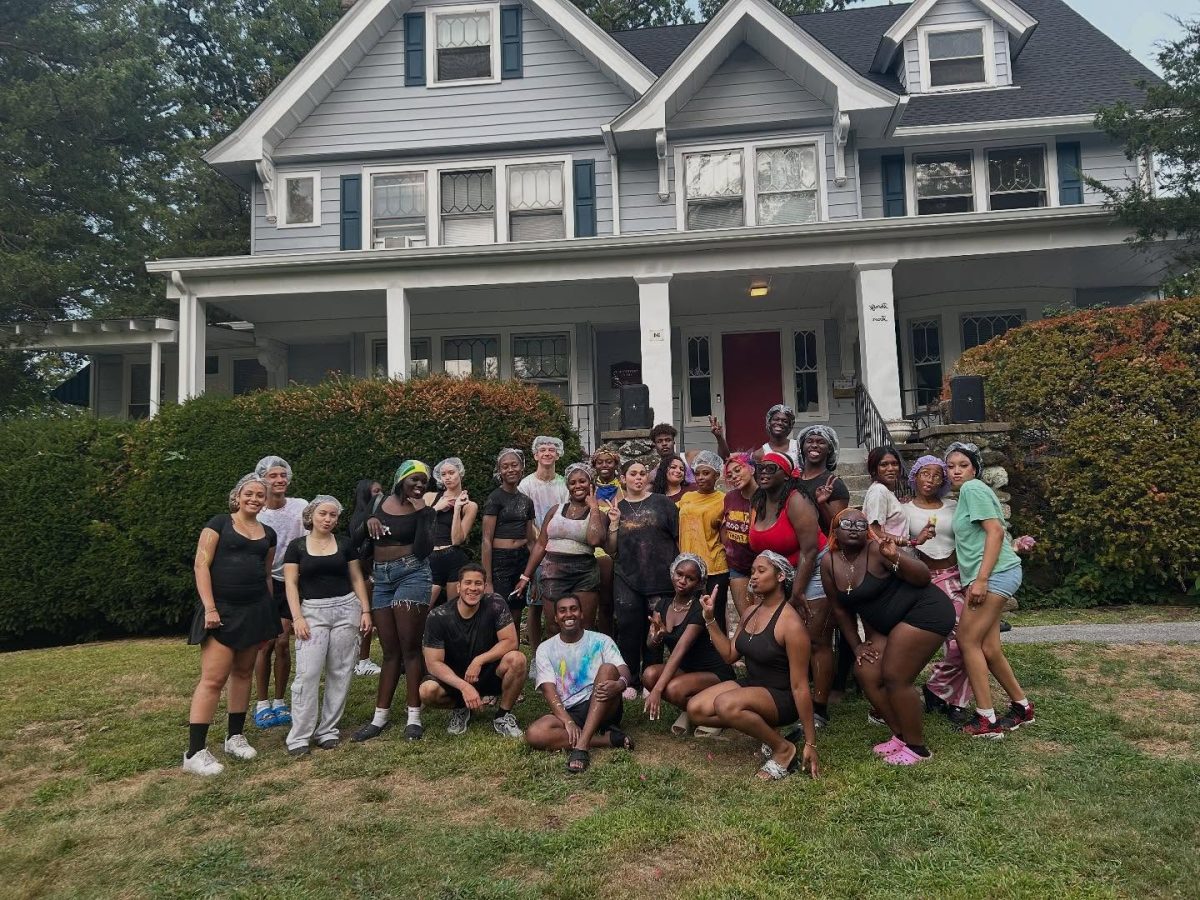February is known for being a month of love and appreciating those special people in your life, but it is also Dating Violence Awareness Month. To encourage students to critically evaluate the healthiness of dating relationships, Gael Interpersonal Violence Education (G.I.V.E.) Grant Director Leonora Campbell has organized a series of multiorganization information tables for students to educate themselves on dating violence.
The approach adopted by Campbell to fostering awareness for dating violence involves student organization collaboration. For Valentine’s Day, the Neurodiversity Club and Delta Upsilon Fraternity hosted the #LOVELIKETHAT info table to engage students with what it means to be in a healthy relationship.
The #LOVELIKETHAT name encompasses the mission of the info table to explain what healthy love (referred to as “that”) means. The info table was a massive success, drawing student attention with the following: A hand-made gift basket raffle, teddy bear giveaways and an interactive chart asking students to write what they believe a healthy relationship means. Here are the some of the key takeaways from the #LOVELIKETHAT info table:
Ten Signs of a Healthy Relationship
The core initiative of G.I.V.E. Grant info tables and events is to provide students with identifiable criteria for healthy and unhealthy relationships that are applicable to both in-person relationships and digital relationships. Here are ten signs used to identify a healthy relationship and ten signs used to identify an unhealthy relationship:
- Respect: You value one another’s beliefs and opinions and love one another for who they are as a person.
- Comfortable Pace: The relationship moves at a speed that feels enjoyable for each person.
- Trust: Confidence that your partner won’t do anything to hurt you or ruin the relationship.
- Honesty: You can be truthful and candid without fearing how the other person will respond.
- Kindness: You are caring and empathetic to one another and provide comfort and support.
- Independence: You have space to be yourself outside the relationship.
- Equality: The relationship feels balanced, and everyone puts the same effort into the success of the relationship.
- Taking Responsibility: Owning your own actions and words.
- Healthy Conflict: Openly and respectfully discussing issues and confronting disagreements non-judgmentally.
- Fun: You enjoy spending time together and bring out the best of each other.
Ten Signs of an Unhealthy Relationship
- Betrayal: When someone is disloyal or acts in an intentionally dishonest way.
- Belittling: When someone does and says things to make you feel bad about yourself.
- Isolation: When someone keeps you from friends, family or other people.
- Possessiveness: When someone is jealous to a point where they try to control who you spend time with and what you do.
- Volatility: When someone has a really strong, unpredictable reaction that makes you feel scared, confused or intimidated.
- Intensity: When someone expresses feelings and over-the-top behavior that feels overwhelming.
- Manipulation: When someone tries to control your decisions, actions, or emotions.
- Sabotage: When someone purposely ruins your reputation, achievements or success.
- Guilting: When someone makes you feel responsible for their actions or makes you feel like it is your job to keep them happy.
- Deflecting Responsibility: When someone repeatedly makes excuses for their unhealthy behavior.
Students need to know what to expect from a healthy relationship prior to the process of cultivating a relationship, and this is precisely what the #LOVELIKETHAT info table sought to provide. “Dating 101 is about making conscious decisions regarding what you expect from the relationship, a communication that can only take place with a foundation of mutual honesty and loyalty,” Campbell explains.
Stay tuned for the next G.I.V.E. Grant Column, which will discuss how to properly intervene in unhealthy relationships and dating violence scenarios, as well as the resources available to those affected by dating violence.




